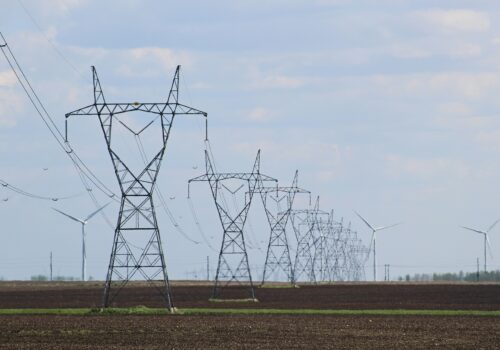Dissolving the fence: Improving utility privatization for defense installations’ resiliency
US military power projection begins at home, with installations across the continental United States serving as hubs for command, force generation, logistics, and access to space and cyber domains. Yet these bases are deeply dependent on electricity systems that are increasingly vulnerable. Aging infrastructure, rising demand from advanced technologies, more frequent extreme weather, and mounting cyber threats all pose risks to the reliable power needed for mission readiness. This dependency exposes a persistent vulnerability at the very foundation of US defense.
Congress has directed that critical mission systems on US installations must have power available 99.9 percent of the time, but meeting this requirement is a major challenge. Efforts “inside the fence” to improve backup generation, microgrids, and maintenance are essential, but the fractured funding environment and “run to failure” mentality mean resilience often comes second to urgent demands. At the same time, “outside the fence,” the civilian utilities that installations depend on are struggling with transformer shortages, capacity constraints, and grid modernization challenges. Together, these pressures are widening the gap between mission requirements and the energy systems meant to sustain them.
Utility privatization offers one practical tool to close this gap. By transferring installation distribution assets to regulated utilities whose business model is to invest capital in grid reliability, the Department of Defense can align incentives, reduce bureaucratic delays, and unlock private-sector expertise. But with utilities facing regulatory and financial constraints of their own, deeper partnerships are needed—treating installations as a unique customer class, exploring flexible ownership structures, and integrating on-base assets like microgrids as contributors to both mission assurance and community resilience.
Meeting the installation energy challenge will require the Department of Defense to consolidate fragmented efforts into a coherent resilience strategy, strengthen engagement with utilities and regulators, and expand partnership models that bring innovation to scale. Reliable power is no longer a background requirement—it is a strategic imperative that determines whether US forces can project, fight, and sustain operations in a crisis.
Correction: A previous version of this piece misstated the location of an advanced microgrid on a military base. The base is Marine Corps Air Station Miramar.
View the full issue brief
About the authors
related content
stay connected
Sign up for PowerPlay, the Atlantic Council’s bimonthly newsletter keeping you up to date on all facets of the energy transition
Explore the program

The Global Energy Center develops and promotes pragmatic and nonpartisan policy solutions designed to advance global energy security, enhance economic opportunity, and accelerate pathways to net-zero emissions.
Image: For the past year, several Army installations have conducted energy-resiliency exercises to identify faults in their power-grid or back-up power infrastructure. Source: US Army






